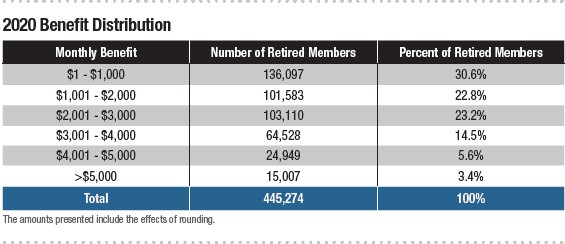As a child, I remember having life-size, inflatable punching
bags. They looked like cartoon characters, and sand filled the bottom so they
would bounce right back after being knocked down. Since 2017, the Texas
Legislature has used retired public-school employees as their bounce-back
punching bags.
I retired from
teaching in 2013. For the first four
years, I had good, affordable insurance. But in 2017, without warning, the Texas
Legislature raised the deductible for all Teacher Retirement System (TRS)
retirees under the age of 65 from $400 to $1500. (Remember that TRS is a
misnomer as it actually covers ALL public-ed retirees, including bus drivers,
custodians, maintenance staff, police officers, teachers, administrators,
librarians, classroom aides, counselors, cafeteria staff….)
Prior to 2017, we also had a co-pay
for doctors’ visits and prescriptions. Not only did they nearly quadruple our
deductible, but they also robbed us of a co-pay. Now we have to pay the entire $1500 out of
pocket before our insurance pays a penny--except for preventive procedures,
such as mammograms--and a list of standard generic drugs. (If a retiree has his/her
spouse on the plan, that couple must meet the $3000 deductible—rather than
$1500 per person—before insurance kicks in.)
You may
remember that Texas has two pension systems—TRS and ERS. ERS is the Employees
Retirement System, which handles pensions and health care for all other state employees.
While our deductible went from $400 to $1500 in 2017, the health-care deductible
for ERS retirees went from $0 to $0. ZERO. Oh, and their monthly premium went
from $0 to $0. ZERO. Ours is $200 per month. Did I mention that
retired Texas legislators are covered under ERS health care and receive a
pension from ERS?
COLA
Since I
retired in 2013, I have not received a single cost-of-living adjustment (aka
COLA). According to Consumer
Price Index inflation calculator, “ The dollar had an average inflation
rate of 2.02% per year between 2013 and today, producing a cumulative price
increase of 19.68%.” My monthly pension
has had a 0 percent increase since 2013.
ZERO.
You may be shocked to learn that the last time the Texas Legislature provided TRS retirees with a COLA was in 2013, BUT…and it’s a BIG but…it was a 3 percent increase, capped at $100 per month, and it was only for public-school employees who retired prior to September 1, 2004. Yes, 2004. So for the past 18 YEARS, public-school employees have received ZERO COLAs. ZERO.
13th Check
Despite another
Legislative Session spent pushing for a COLA, in 2021, once again, our cries
fell on deaf ears. In the end, during a Special Session, our legislators chose
to ignore the fact that we have gone all these years without a COLA and instead
approved a “13th check,” capped at $2400.
It works like this: If a TRS retiree earns less than $2400 per
month in his/her annuity payment, the 13th check would be equal to his/her
monthly payment. Those earning over $2400 per month would ger $2400. These
checks were sent to us mid-January.
While I
think most of us would rather get something, than nothing, it was another punch
to TRS bounce-back retirees. My check arrived, minus $346.37. I immediately
thought of my retired colleagues who earn far less:
Please look at this carefully. The highest percentage—30.6%--of TRS retirees earn a monthly benefit (annuity payment) of $1 - $1000, and those who retired since September 1, 2004, have NEVER had a COLA!
Latest Blow
Just as TRS
retirees across the state were reeling from the large deductions taken from our
13th check, we received another blow from TRS via the U.S.P.S. Every
January, TRS sends us a letter to show us the difference in our net monthly
annuity from the previous year to the current year. Normally—and I am NOT kidding—it will show an
increase of $1.00 or so. When I received
mine, it showed I would be receiving $140.71 LESS in 2022 than I did in
2021. How do Texas legislators
expect us to continue while earning LESS?
Have you seen
the gas prices recently? Grocery prices? ALL prices? I immediately contacted TRS via DM on Twitter
and received a quick response: “…generally, a one-time supplemental payment is
treated as taxable income to an eligible annuitant. Your withholding rate will
return to normal on your February payment. In February, TRS will send out a new
letter with a comparative summary of the January and February annuity payments.
This will show the changes in the IRS withholding for your February and future
annuity payments in 2022. If you see a higher withholding amount for your
January annuity payment, it is likely because receiving the supplemental
payment in addition to your annuity payment increased your rate of withholding
for the month of January. Lastly please note, the IRS released new annual tax
withholding tables at the end of December that were applied to the January
payments, so you may also notice those nominal adjustments to your withholding
amount.”
1. 1. WHY
wasn’t this possibility discussed when the Texas Legislature was once again
denying us a COLA and attempting a final-hour, heroic act with a 13th
check?
2. 2, WHY would TRS send these letters out in January, upsetting everyone at a time when there is enough stress related to inflation, our UNaffordable health care, and COVID instead of providing us with January AND February–December payment information?
And….
WHY do public-ed retirees continue to be their bounce-back punching bags?
Chris Ardis retired in May of 2013 following a 29-year
teaching career. She now works as a freelance writer and editor and is
committed to education, educators, and students. Chris can be reached at
cardis1022@aol.com. (Photo by Linda Blackwell, McAllen.)


